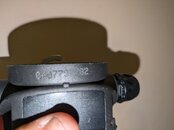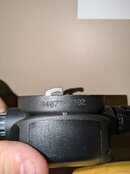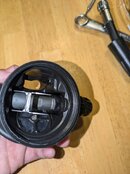Based on your description, you may indeed be describing the click and resistance as the plastic disc on the back of the diaphragm drops with minimal effort on gentle inhalation until it hits a low lever, and you then feel "resistance" until the valve opens ("cracks").
If you can see the lever moving as you adjust the orifice, then here's a test.
Unscrew the orifice until the lever is at its highest position. Blow through the hose connection and screw in the orifice until it seals to breath pressure.
Connect your inline adjuster and pressurize the system. It will again leak. Screw in the orifice until it just seals.
Is the lever at or below the rim of the case? Did the lever drop before it sealed? In either case, your orifice knife edge is likely scuffed (assuming you're using a new seat). If you're trying all this with the old seat, all bets are off for reasons that are multi-factorial. It might work; it might not.
If the lever is above the case rim and didn't drop before sealing, you're halfway there. Now add 1/12 turn (5 minutes on the clock face). The lever may drop 0.5mm.
Now, with the reg pressurized add the diaphragm and begin screwing on the faceplate.
If the reg begins to leak, the lever is slightly too high for the case. When the faceplate is fully screwed on, once again slowly screw in the orifice with the in-line adjuster to drop the lever until it just seals (e.g., just fits under the diaphragm). Now add 1/12 turn.
Measure cracking effort and let us know.






